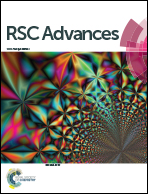Effect of cold plasma treatment on surface properties and gas permeability of polyimide films
Abstract
The surface functionalization of polyimide (Matrimid® 5218) films was carried out by cold plasma treatment with CF4, N2 and O2 gases using a radio frequency discharge and the optimum plasma conditions were evaluated by water contact angle measurements. The surface hydrophobicity of polyimide films was obtained after CF4 plasma treatment, while O2 and N2 plasma treatments contributed to the hydrophilic surface functionalization. X-ray photoelectron spectroscopy (XPS) results revealed the presence of CFx, amino or oxygen-containing groups attached to the polyimide film surface depending on the treatment gas. A strong influence of the used plasma gas on the film roughness was determined by atomic force microscopy (AFM) measurements. The influence of the surface modification on CO2, N2 and O2 gas permeation through the plasma treated films was evaluated. The permeation behaviour was characterized in terms of transport parameters, namely, coefficients of permeability, diffusion and solubility. The permeability coefficient of all plasma treated polyimide films for the studied gases (CO2, N2 and O2) was found to decrease following the order of increasing the kinetic molecular diameter of the penetrant gas. Besides, the selectivity coefficient was found to be significantly increased after the plasma treatments – αCO2/N2 was increased up to 36% and 98% for O2 and N2 plasma treated Matrimid® 5218 films, respectively. The relationship between the gas permeation behaviour and the surface modification of polymer film by cold plasma was discussed.


 Please wait while we load your content...
Please wait while we load your content...